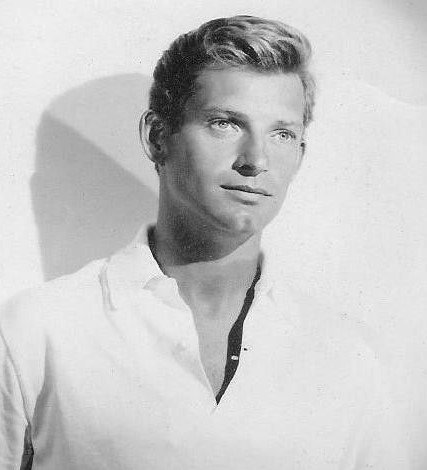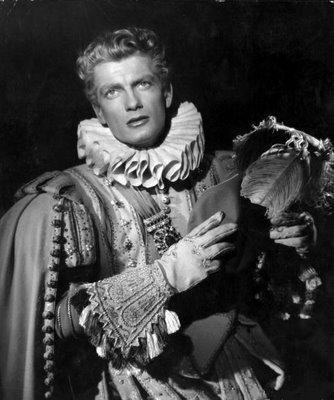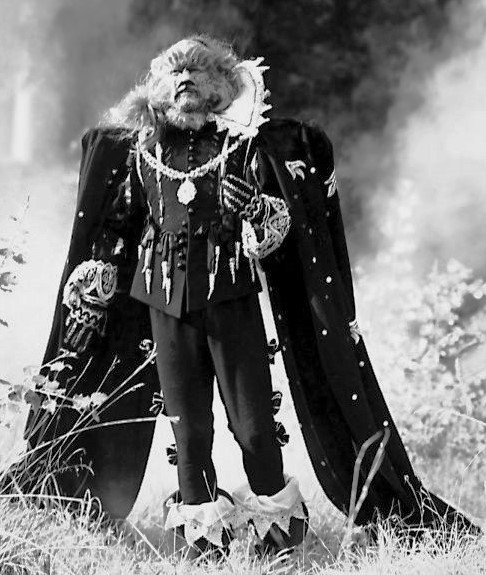
George Reich (ca 1950)
George F. Reich’s absence from Cherry Grove in August 1949 is noted by Suzy Aronson in her Cherry Grove Column (Suffolk County News). Reich was a gifted performer and choreographer for original Broadway revues including “Inside U.S.A.” (1948) and “Touch and Go” (1949). George’s father (George, Jr.) was a founder of the Cherry Grove Volunteer Fire Department and August ‘Augie’ H. Reich, an uncle, was president of the Property Owners Association in 1949.
The Reichs were also caretakers of timeless family values. A small but very vocal group of property owners pressured Augie to police midnight swims and drunkenness. Eventually, they were enjoined by conservative residents at community meetings to denounce the Grove’s “queer assortment of characters” and their “disgusting behavior that takes place every summer.” According to later recollections, Augie’s attitude and the hate-fueled community rhetoric changed when his nephew came out as gay to the family and appeared in Cherry Grove’s theatricals.

Jean Marais/The Prince
George F. Reich (1926-2013), a blonde, athletic, boy-next-door type, became the first classically trained dancer to organize an American-style ballet company, The Ballet HO, in Paris, France. He danced for the Lido de Paris, the Moulin Rouge, The Ballet De Paris, and in the MGM movie “The Glass Slipper” with Leslie Caron. Reich choreographed shows for Marlene Dietrich, Joséphine Baker, and Edith Piaf. French biographers also celebrate Reich’s love affair with one of France’s most celebrated film stars, Renaissance talent, Légion d’honneur and Croix de Guerre awardee Jean Marais.
Classically handsome, and with Errol Flynn-like chiseled looks, Marais (1913-1998) created a sensation as Le Bête/Le Prince and Avenant in Jean Cocteau’s 1946 French film “La Belle et la Bête” (“The Beauty and the Beast”). French biographers also celebrate world-renowned film director Cocteau’s (1889-1963) very public, unapologetic, homosexual identity. He and Marais were lovers for many years, then lifelong friends. George Reich was Marais’ companion and romantic partner for over a decade. They appeared together frequently at social and theatrical events. All achieved stellar, multi-faceted creative careers.
Did the sexual orientation of these artists affect their creativity? Whose life isn’t enhanced by being accepted and loved? A creative’s output is encouraged absent censure. Are audiences less moved by the romance and magic of Cocteau’s “Beauty and the Beast” knowing it’s created by a closeted-to-audiences gay male lead and his director? Must audiences laugh less with Disney’s 1991 animation of this timeless fantasy, or its 2017 live-action adaptation, when they learn (possible spoiler alert!) that the ingeniously witty lyrics were written by a gay man, Howard Ashman? The Academy Award-winning lyricist for “The Little Mermaid” and “Beauty and the Beast,” Ashman is described in Vanity Fair as yet another “pioneering gay artist.” He died tragically from AIDS; “Beauty and the Beast” (1991) is dedicated to him.
Bill Condon, director of Disney’s live-action “Beauty and the Beast,” blew up the Internet in 2017 announcing in Attitude Magazine that there’d be “an exclusively gay moment” in the film. LeFou (Josh Gad), side-kick to the narcissistic villain Gaston (portrayed by ‘out’ in 2002, gay Luke Evans), is revealed to have equivocal feelings for him in the song “Gaston.” At the very end of the movie, LeFou briefly dances with one of the male thugs who earlier admires a dress tossed on him during a battle with the bewitched wardrobe, Madame de Garderobe (Audra McDonald). Matt Jacobs in the Huffington Post observes, “So, we end with a dose of gender-bending camp and a glimpse of actual contact between two ostensible homosexuals.”
Disney’s 2017 “Beauty and the Beast” was given a restricted rating in Russia, was banned in Kuwait, and an Alabama drive-in refused to screen it because of these momentary (several seconds each) allusions to being different. No vigorous condemnation erupted, however, over the rifle-toting Gaston and his violent dispatching of the Beast. Could this version of “Beauty and the Beast” have survived our country’s current ‘anti-everything that is different’ environment?

Jean Marais/The Beast (Van Vechten 1947)
Cocteau’s “Beauty and the Beast” is revered as a cinematic masterpiece. Two generations of children with their parents sat in movie theaters worldwide singing along to Ashman’s “Be Our Guest.” Disney’s 2017 “Beauty and the Beast” controversy is all but forgotten, and likely went unnoticed by most viewers. At stake today isn’t simply forgetting past events or specific people like George Reich, but the erasure and revision of America’s cultural heritage. It’s being demanded by a small, but very vocal group of individuals, not dissimilar to those in 1949 Cherry Grove. This is much more than a twice-told tale as old as time. Past generations have censored and banned people, books, movies, and teachings. Each new generation is tasked with recovering our country’s collective truths and protecting its history for future generations. Truth will prevail even if a thousand voices espouse error. The Beast is cursed for having no love in its heart. Love breaks the curse.































